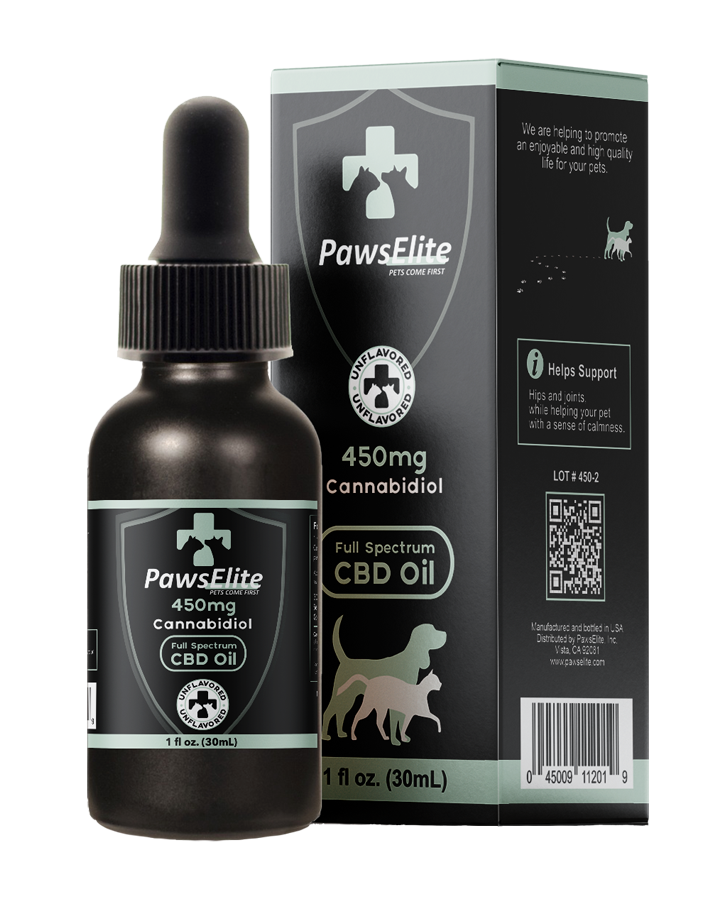
Can Dogs Have Pineapple and Is Pineapple Good For Dogs?
Share
Many dogs simply can't get all the nutrition they need from bagged or canned dog foods. Even homemade meals may be lacking in crucial areas. Using treats such as pineapples can help them obtain a truly balanced diet. A balanced diet can help dogs overcome serious health issues, conditions, and generally enjoy their life more. Read more below to learn if dogs can have pineapple.
Some of our customers love to mix Paws Elite's Organic Pet CBD Oil with Pineapple for dogs.
Can Dogs Have Pineapple?
The big question is, can dogs have pineapple? The answer is yes, but in moderation. Pineapple is a treat, so if you go overboard, your dog could experience an upset stomach or digestion problems.
Unfortunately for pups, it’s been a long-time myth that pineapple was terrible for dogs, dogs can have pineapples. We don't know where the rumors started, but someone really had it out for pineapples. You can certainly give your dog’s pineapples, fresh, or frozen; it is not harmful. Canned is also an option but should be avoided because it has much higher sugar content.

Is Pineapple Good for Dogs?
Pineapples and dogs should go together like peanut butter and jelly, or Scooby and Scooby snacks. They’re meant for each other. So first we ask "Can Dogs Have Pineapple?", then we learn about "Is Pineapple Good For Dogs?".
See how Using pineapples for dogs as a snack can deliver:
- Tons of vitamin C
- Nourished water (Pineapple is about 85% water)
- B6
- Thiamine
- Folate
- Manganese
These vitamins all work together to help aid in skin health and tissue health. But it should only be a snack, and all of the fruit and vegetables in your dog’s diet should only make up 10% of what they eat.
Is Pineapple Safe for Dogs?
Pineapple is generally safe for dogs in moderation. It's a fruit that's low in calories and fat while offering some essential nutrients. Here are some key points to consider:
Nutritional Benefits: Pineapple contains essential vitamins and minerals like vitamin C, vitamin B6, and manganese. These nutrients can contribute to a dog's overall health and well-being.
Fiber: Pineapple is a good source of dietary fiber, which can aid in digestion and help regulate bowel movements in dogs. However, excessive consumption can lead to digestive upset.
Natural Sugars: Pineapple contains natural sugars, mainly fructose. While these sugars are not harmful in moderation, too much fruit can lead to weight gain and potential blood sugar spikes in some dogs, particularly those with diabetes.
Pineapple Precautions for Dogs
While pineapple can offer some health benefits to dogs, there are important precautions to keep in mind:
Moderation: Always feed pineapple to your dog in moderation. Small, bite-sized pieces are best, and avoid giving them large quantities at once.
Fresh Pineapple vs. Canned: Fresh pineapple is preferable to canned pineapple because it lacks added sugars, preservatives, and artificial flavorings. Make sure to remove the tough outer skin and the core, as they can be tough to digest.
Avoid Pineapple Core: The tough core of the pineapple can be challenging for dogs to digest and may pose a choking hazard. Remove it before serving.
Allergies: Like with any new food, monitor your dog for any signs of allergies or digestive issues when introducing pineapple into their diet for the first time.
Frozen Pineapple: Some dogs enjoy frozen pineapple chunks as a refreshing treat, especially on hot days. However, be mindful of the size of the frozen pieces to prevent choking.
Consult Your Vet: If you have any doubts or concerns about whether pineapple is suitable for your dog, it's a good idea to consult your veterinarian for personalized advice, especially if your dog has underlying health conditions.
How to Give Pineapple to Your Pup
After we've answered the question "Can Dogs Have Pineapple?" we learn about how to give pineapple to your dog. Fresh is always the best option when it comes to any natural treat for your dog. You want to completely remove the tough skin by cutting all around the edges to remove the skin. You must also remove the cores.
We all know that most dogs don’t chew, or they don’t chew their food well. The skin and the cores are choking hazards, and they generally aren’t as tasty as the ‘meat’ of the fruit.
Here is how to easily prepare a pineapple:
- Cut the top and bottom off the pineapple.
- Stand the pineapple upright, then cut off the skin with downward knife strokes.
- Slice the pineapple in half.
- Cut the pineapple into quarters.
- Trim the core, be careful, and never slice toward yourself.
- Chop the quarters into bite-sized chunks.
You can also top off the prepared pineapple for your dog with Organic Pet CBD Oil.

If your dog has any stress, anxiety, or allergies, you might already be using CBD as part of their diet. You can certainly add CBD droplets or tincture right onto pineapple. Dogs are masters at detecting medicine or supplements in their treats. Pineapple, however, has a strong enough smell and flavor that you can get away with adding CBD and them usually not detecting it.
There are also different recipes online to keep your dog’s diet exciting. This pineapple molasses dog treat recipe is excellent, or make these simple pineapple “pupsicles” to keep your dog cool in the summer months.
Feeding Pineapple to Your Dog: Types and Precautions
Certainly! When it comes to feeding pineapple to dogs, it's important to consider the types of pineapple and which parts are safe for them to consume. Here's a breakdown of the different types of pineapple and which parts are suitable for dogs:
1. Fresh Pineapple:
Flesh: The flesh of fresh pineapple is safe for dogs to eat and can provide them with some nutritional benefits. It's best to offer small, bite-sized pieces of fresh pineapple to your dog.
Skin: The tough outer skin of a pineapple is not suitable for dogs to eat. It can be difficult to digest and may pose a choking hazard, so it should be removed before serving.
Core: The tough core of a pineapple is also not recommended for dogs. It can be challenging for them to digest and may pose a choking risk. Always remove the core before giving pineapple to your dog.
2. Canned Pineapple:
Fruit: Canned pineapple, particularly those packed in natural juice without added sugars or artificial sweeteners, can be fed to dogs in moderation. However, it's important to drain the pineapple pieces of excess juice to reduce the sugar content. As with fresh pineapple, offer small amounts as an occasional treat.
Syrup: Canned pineapple often comes in syrup, which is high in added sugars. This syrup should be avoided as it can lead to weight gain and potential blood sugar spikes in dogs. Opt for canned pineapple in natural juice or, even better, choose fresh pineapple.
Pineapple Precautions:
- Always feed pineapple to your dog in moderation. A few small pieces as an occasional treat are sufficient.
- Monitor your dog for any signs of allergies or digestive issues when introducing pineapple into their diet for the first time.
- Be cautious with the size of pineapple pieces, especially if you're offering frozen pineapple chunks. Large pieces can pose a choking hazard.
- Consult your veterinarian if you have concerns or if your dog has underlying health conditions.
In summary, dogs can safely eat the flesh of fresh pineapple or canned pineapple packed in natural juice (with the excess juice drained). However, it's crucial to remove the tough skin and core, which can be difficult for dogs to digest and may pose choking risks. As with any new food, moderation is key, and it's wise to consult your vet if you have specific concerns about your dog's diet or any potential allergies. When offered responsibly, pineapple can be a tasty and nutritious treat for your furry friend.
In Conclusion, Can Dogs Have Pineapple?
Pineapple is an outstanding source of fiber, vitamin c, but it does have a lot of natural sugar. Dogs don't do well with high doses of sugar because their digestive system isn't meant to handle it. As a treat, pineapple is perfectly healthy, but don't give your pup more than a few bits of pineapple at a time.







